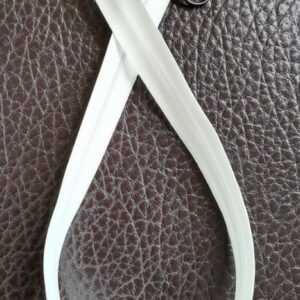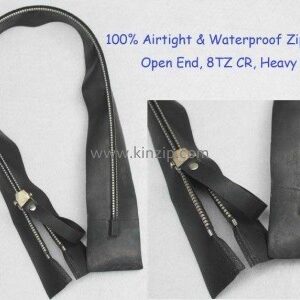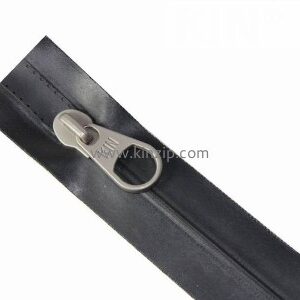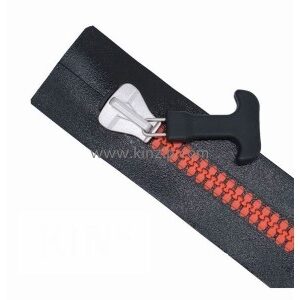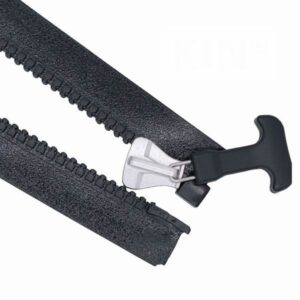In situations where protection from water, chemical fumes, and other substances is the priority, airtight zippers are a must. These zippers are specifically designed and manufactured to act as a protective barrier against most liquids and gases. As such, they are commonly used in marine sportswear (survival and life suits, wet or dry diving suits), inflatable objects (water beds, water-walking balls), camping gear (tents, backpacks), protection suits (decompression clothing, immersion suits, firefighters’ suits) and other types of functional clothing.
Due to their special nature, airtight zippers are treated and stored differently from regular zippers.
Using Airtight Zippers
Before Use
- For clothing with airtight zippers on the back (or other locations that can’t be easily accessed on one’s own) like in dive suits, the assistance of another person is required to properly zip the zipper.
- PVC airtight zippers should only be used in environments that are not less than ten degrees Celsius and not more than 40 degrees Celsius. Any temperature lesser or more than these can severely weaken the bond of the zipper to the cloth and the structural integrity of the zipper itself. This is due to the fact that extreme temperatures can cause chemical changes in PVC.
In Use
- Always move the pull head in an almost parallel direction along the rack rail. If you pull on it from an angle, there is a chance that the airtight and/or watertight properties of the zipper will be reduced.
- Don’t zip up the zipper too fast. Don’t constantly zip it open and close too. Doing so can severely damage the zipper and compromise its airtight qualities.
- If cloth, thread, or any other object becomes entangled in the zipper, don’t pull the obstruction violently. Gently zip the pull head back, work the problematic thread or cloth away, then zip it back up.
After Use
- Gently clean the exterior rail of the zipper using water and a soft, small brush. You can use beeswax as a lubricant. However, you have to take precaution that the water and beeswax don’t get inside the interior rail of the zipper, as it might severely weaken its airtight/watertight properties.
- Don’t expose the zipper to the elements when not needed. Store it inside a cool and shady area immediately after use.
Storing Airtight Zippers
- If storing the zipper for long periods of time, keep it stored away in a closed case to protect it from humidity. This is to prevent oxidation on the zipper.
- When storing clothes that are fitted with airtight zippers, roll the clothes along the end of the zipper and keep the zipper facing outwards. The zipper itself shouldn’t be folded, pressed on or bent by other objects.
- If the clothes are to be hanged, the zipper should be kept open to reduce tension on the zipper.
1. Rinse both sides of the watertight zipper and brush off any object attached.
2. Store with the zipper completely opened, taking care not to bend it.
3. Do not place any heavy objects on the waterproof zipper.

